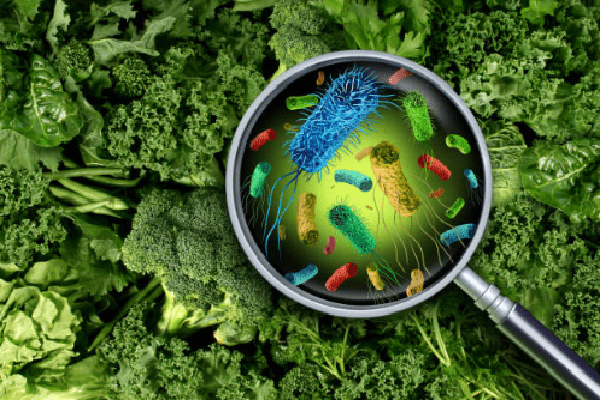Infectious diseases >>>> Listeriosis - signs and treatment
Listeriosis - signs and treatment.

Listeriosis is an infectious disease that affects the central nervous system, the lymphatic system (in particular the lymph nodes and tonsils), the liver, and the spleen. It differs from other infectious diseases in a variety of forms of manifestation. The causative agent of listeriosis is considered to be an aerobic microorganism - Listeria monocytogenes, which, when entering the cell of an animal or human, is capable of transforming and parasitizing for a long time, which allows the disease to develop slowly and often in a latent form. Listeria is capable of causing monocytosis (an increase in the number of monocytes in the blood), which it revealed itself at the beginning of the 20th century and received the corresponding name.
Listeria is an unpretentious organism that can survive in various temperature conditions and multiply in various environments: in water, in soil, on the surface of plants, on plant seeds, on animal corpses, in food. Listeria usually affects the body of animals (domestic and wild), fish, marine animals. It is excreted into the external environment with feces, urine, milk, blood, semen, etc.
The mechanism of transmission of listeria is fecal - oral, airborne, transplacental (from mother to fetus). A person can become infected and get sick with listeriosis as a result of contact with sick animals, as well as due to poorly washed and eaten vegetables (especially salads and salad varieties of cabbage), improper hand hygiene, eating unpasteurized milk or contaminated dairy products (especially soft cheeses, feta cheese ), eating poultry or animal meat that is not sufficiently thermally processed (Listeria dies after 35 minutes when heated to 65 in Celsius and after 5-10 minutes when boiled at 100 in Celsius).
Listeria enters the gastrointestinal tract or through the tonsils into the lymphatic system, enters the bloodstream, then spreads to other organs, provoking necrosis of liver tissue, damage to the spleen. Listeria is able to invade the cells of the nervous system, causing meningitis or meningoencephalitis. But the most dangerous is the ability of Listeria to cause generalized sepsis - damage to the whole organism. Listeriosis threatens pregnant women with the birth of a still child, early death of a newborn. Reduced immune responses, taking immunosuppressants, and treatment with corticosteroids create favorable conditions for the development of listeriosis. The incubation period of listeriosis can last up to one and a half months.
Signs of listeriosis depend on the clinical course of the disease.
- In the angio-septic form (the most common manifestation of listeriosis), attention should be paid to symptoms similar to those of tonsillitis. The disease proceeds in the form of follicular or catarrhal sore throat, after a week, recovery occurs. If, with angina, the formation of ulcers or plaque in the form of a film is observed on the tonsils, regional lymph nodes are enlarged, a high temperature, and a blood test shows mononucleosis of 70% or more, then listeria sore throat should be assumed. Against the background of symptoms similar to angina, other signs of listeriosis may occur : polymorphic skin rash, fever, meningeal syndrome, conjunctivitis .
- When the nervous system is affected by Listeria, the clinic of the disease resembles meningitis, meningoencephalitis, and brain abscess. There are neuritis and / or paresis of certain muscle groups.
- With a septic - granulomatous form of the course of the disease (usually in newborns), fever, respiratory failures, circulatory disorders, dyspeptic disorders, papular rashes are observed . In infants, the temperature rises, symptoms of a respiratory infection, symptoms resembling jaundice (enlarged liver), and meningeal syndrome develop .
- With the eye - glandular form of listeriosis , conjunctivitis develops, the temperature rises, the eyelids swell, and the parotid and cervical lymph nodes increase. The disease can last for a long period of time (up to three months).
- In the chronic form of the course of listeriosis, special clinical manifestations are not observed with the exception of unexplained catarrhal phenomena and short-term attacks of fever.
The complexity of the diagnosis of listeriosis is due to the variety of its clinical forms, as well as the antigenic relationship of staphylococcus and listeria, which can give false positive results in serological diagnosis of the pathogen. Diagnosis is carried out on the basis of blood tests, swabs from tonsils and pharynx, examination of cerebrospinal fluid, as well as amniotic fluid and placenta in case of symptoms in newborn children (the disease in this case is called "granulomatosis of the newborn").
When the treatment of listeriosis , not all antibiotics are effective. Listeria is especially sensitive to the group of penicillin derivatives, fluoroquinols, tetracyclines, vancomycin, daptomycin. In case of an ophthalmic glandular form, the conjunctiva is washed with sodium sulfacil solution, and / or hydrocortisone is used in the form of an emulsion. Immunocorrectors are used to support immunity .

Read

Read



























